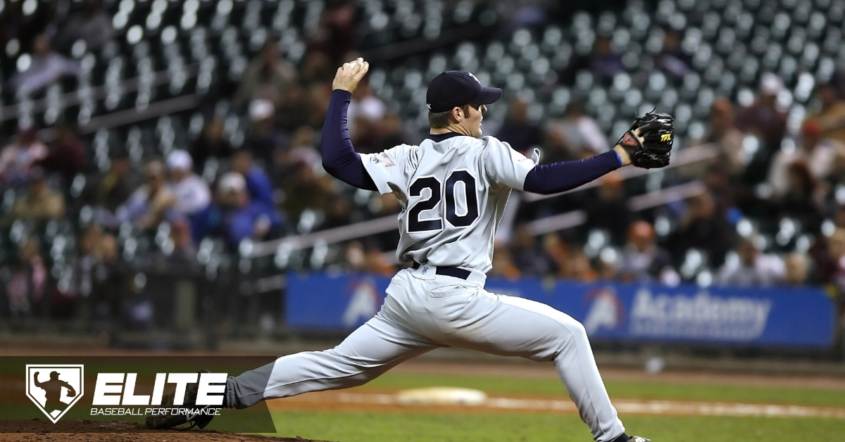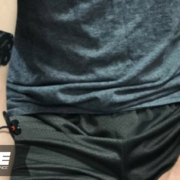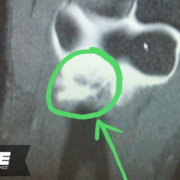Returning to Baseball After ACL Reconstruction
It is no secret that anterior cruciate ligament (ACL) injuries and reconstruction surgeries are very common at all levels of sports today. As a physical therapist, I rarely go more than a few days without a patient in my clinic rehabilitating from ACL reconstruction (ACLR), and many coaches have likely encountered or will encounter athletes returning from this surgery.
Though ACL injuries are infrequent in the sport of baseball, I have helped several baseball players rehab and return to play after ACLR over the past year. While most baseball coaches likely have some awareness of shoulder/elbow injuries, they may not have as much exposure or education with players returning from ACLR.
For the rehab professional, it can also be very easy to overlook the sport-specific demands of baseball players when rehabbing from ACLR.
My purpose in writing this article is to provide some insight into recent research regarding return to sport after ACLR and some points to consider when returning to baseball activities after ACLR.
Secondary ACL Injury Risk – The Research
One of the biggest issues with returning an athlete to sport after ACLR is risk of a secondary ACL injury, either in the same knee or on the opposite knee. New research indicates that this may be happening at an alarming rate.
I will list some statistics below and then will discuss why these findings matter and how we can improve on how we are returning these athletes to sport activities.
- A 2016 study reported approximately 1.25% of high school and college athletes will have an ACL injury.
- 6 different studies looked at athletes returning to sport after ACLR, and the average rate of a 2nd ACL injury in these studies was roughly 30% (ranging from 25-37%)!
- In one study, 45% of re-injuries occurred in the first 2 months after returning to sport
- Those who returned to sport within 5 months after surgery had a re-injury rate of 100%
- Those who returned within 9 months had a 40% re-injury rate
- Those who waited until after 9 months had a 19% re-injury rate
- There is a roughly 50% decrease in re-injury risk for each month that return to sport is delayed up to 9 months post-op.
Remember that there are always a number of factors involved with any injury, and these include age, gender, sport(s) played, time of year, common playing surface, genetics, previous training history, previous injury history, and many more. Even without specific context, these numbers above are very alarming, and this has become a hot topic issue in the world of sports rehabilitation.
It has become common for surgeons to release athletes to return to sport activities at 6 months post-op, despite the statistics listed above. It has been a challenge for me to convince patients to avoid early return to sport when their surgeon has given them clearance, especially when strength limitations, mobility limitations, movement deficiencies, or any of the factors listed above are still present.
So the challenge, then, is how do we get better in minimizing risk for re-injury with these athletes?
Reducing Risk for Secondary ACL Injury
First, delaying return to sport is usually a great place to start. While there may be certain pressures influencing an athlete to return by a given time, much of the research listed above speaks against simply using a given time frame to determine when an athlete should return.
Many experts are now recommending waiting at least 9 months before returning to sport, with increased time often needed depending on the status of the athlete. The short-term benefits of early return often do not outweigh the long-term risk of re-injury. It is now generally accepted that there should be specific criteria met before returning, regardless of when that is achieved. What specific criteria should be used to determine when an athlete should return to sport is a topic that deserves a separate article of its own.
One of the primary reasons why I believe we see relatively high re-injury rates is that there is often poor communication between the rehab professional and the coach who inherits the athlete who may or may not be completely ready for full return to sport. Often times there are insurance limitations at play or the rehab professional discharges the athlete early with the assumption that the athlete will continue to be compliant with a home exercise program.
As a result, athletes are often discharged from formal physical therapy before they are ready for full return to sport. This leaves them with a lack of professional oversight of their rehab program if they are unable to work with an athletic trainer in their school. Many athletes, then, either do not stay compliant with their home exercise program or are not provided with proper progression of exercises, and their home program eventually fails them.
Research has shown that movement quality can decrease within a few months of stopping supervised exercise programs in uninjured youth athletes, and we have to assume the same is true in a rehabilitation population. Ultimately, unsupervised and outdated exercise programs are not adequate in getting athletes to perform at the required level to return safely to sport.
I believe part of the solution to this problem is to have greater communication between the rehab professional and either the player’s coach and/or parent to ensure that somebody is able to supervise the athlete with their exercise program.
As a coach, if you have an athlete returning from an injury, it is crucial that you get in contact with the athlete’s medical professional to ensure that you are safely and gradually returning that athlete to play. Employing or partnering with a knowledgeable strength and conditioning coach or rehab professional can be a great way to ensure that your athletes are maximizing their development and being monitored for red flags with regard to future injury risk.
Return to Baseball-Specific Activities
One of the areas in which professional supervision may be most important is when handling return to baseball-specific activities such as throwing and hitting. It is important to remember that the athlete has likely spent an extended time away from these activities.
For many athletes, this is likely a good thing for upper extremity health and provides a great window to address issues in the upper extremity kinetic chain. As a rehab professional, it is important to ensure that proper trunk and upper extremity strength and mobility are achieved and maintained, even in the early stages of rehabilitation. This will ensure that the athlete is ready for a gradual progression of throwing activities once their knee allows them.
Once the lower body is ready for returning to throwing or hitting, it is important to allow for a gradual ramp-up in volume and intensity of these activities. Excessive early volume or intensity may predispose them to injury in other areas of the body, such as the shoulder or elbow.
For a recent athlete of mine, we spent an extended period of time performing plyoball throwing drills followed by light flat ground throwing before he got anywhere near the mound just to ensure that he was able to build tolerance for throwing again. This also allowed for gradual progression of loading his surgical knee prior to performing high intensity throwing on a mound. As a coach, you cannot assume that the athlete is ready to return to max effort throwing activities just because the knee appears to be ready for it.
On that same note, specific drill work is a great way to introduce the athlete to baseball activities, but they should be performed with gradual progression of intensity and difficulty. This can allow a player to begin to feel comfortable with position-specific activities before their full return to play. Again, this is where input from an informed professional can be an excellent way to ensure that you are maximizing what you can do with the athlete without exposing them to unnecessary risk.
This is also an excellent time to assess how other parts of the kinetic chain may be impacting throwing or hitting mechanics. Athletes with ACL injury are likely to display limitations with ankle mobility, hip mobility, lower extremity strength, and possibly even trunk stability or mobility issues if these have not been areas of focus throughout their rehab process. While these areas may have been deemed adequate to perform basic strengthening exercises or running/plyometric progressions, they may provide barriers to adequate performance with throwing or hitting.
Closing Thoughts
While there is a relatively large amount of research in return to sport after ACL reconstruction, I am unaware of any that relates specifically to baseball players. I hope to see future research investigating short-term or long-term changes in throwing or hitting mechanics in athletes with previous ACLR history.
These topics discussed above are only a small number of issues that need to be taken into account when returning athletes to baseball after ACLR surgery and there are numerous others that could be discussed as well.
While I work full-time in an outpatient physical therapy clinic, I have made it my goal to partner with local programs and facilities to try to assist with topics such as this to ensure that athletes, coaches, and parents can be better educated about how to safely and effectively return to baseball activities while minimizing risk for future injuries.
For any coaches or facility owners who may read this, I encourage you to partner with a rehab professional or knowledgeable strength and conditioning professional to ensure that you are promoting proper health and wellbeing of your players.
Sources:
Stanley, et al. Sex differences in the incidence of anterior cruciate ligament, medial collateral ligament, and meniscal injuries in collegiate and high school sports: 2009-2010 through 2013-2014. Am J Sports Med, 2016 Jun;44(6):1565-72. doi: 10.1177/0363546516630927.
Grindem, et al. Simple decision rules can reduce reinjury risk by 84% after ACL reconstruction: the Delaware-Oslo ACL cohort study. Br J Sports Med, 2016 Jul;50(13):804-8. doi: 10.1136/bjsports-2016-096031.
Goerger BM, et al. Anterior cruciate ligament injury alters preinjury lower extremity biomechanics in the injured and uninjured leg: the JUMP-ACL study. Br J Sports Med, 2015 Feb;49(3):188-95. doi: 10.1136/bjsports-2013-092982.
Sugimoto, et al. Compliance with neuromuscular training and anterior cruciate ligament injury risk reduction in female athletes: a meta-analysis. J Athl Train, 2012 Nov-Dec;47(6):714-23. doi: 10.4085/1062-6050-47.6.10.
Padua DA, et al. Retention of movement pattern changes after a lower extremity injury prevention program is affected by program duration. Am J Sports Med. 2012;40:300–306. doi: 10.1177/0363546511425474.
Josh Van Dorin
Josh’s biggest professional interests include working with overhead athletes and return to sport programs for injured athletes. He plans to continue working to implement injury prevention, rehabilitation, and strength and conditioning programs specific to the baseball athlete in the future.
Latest posts by Josh Van Dorin (see all)
- Returning to Baseball After ACL Reconstruction - February 26, 2019








What criteria do you use/milestones the player needs to accomplish to return to batting practice?